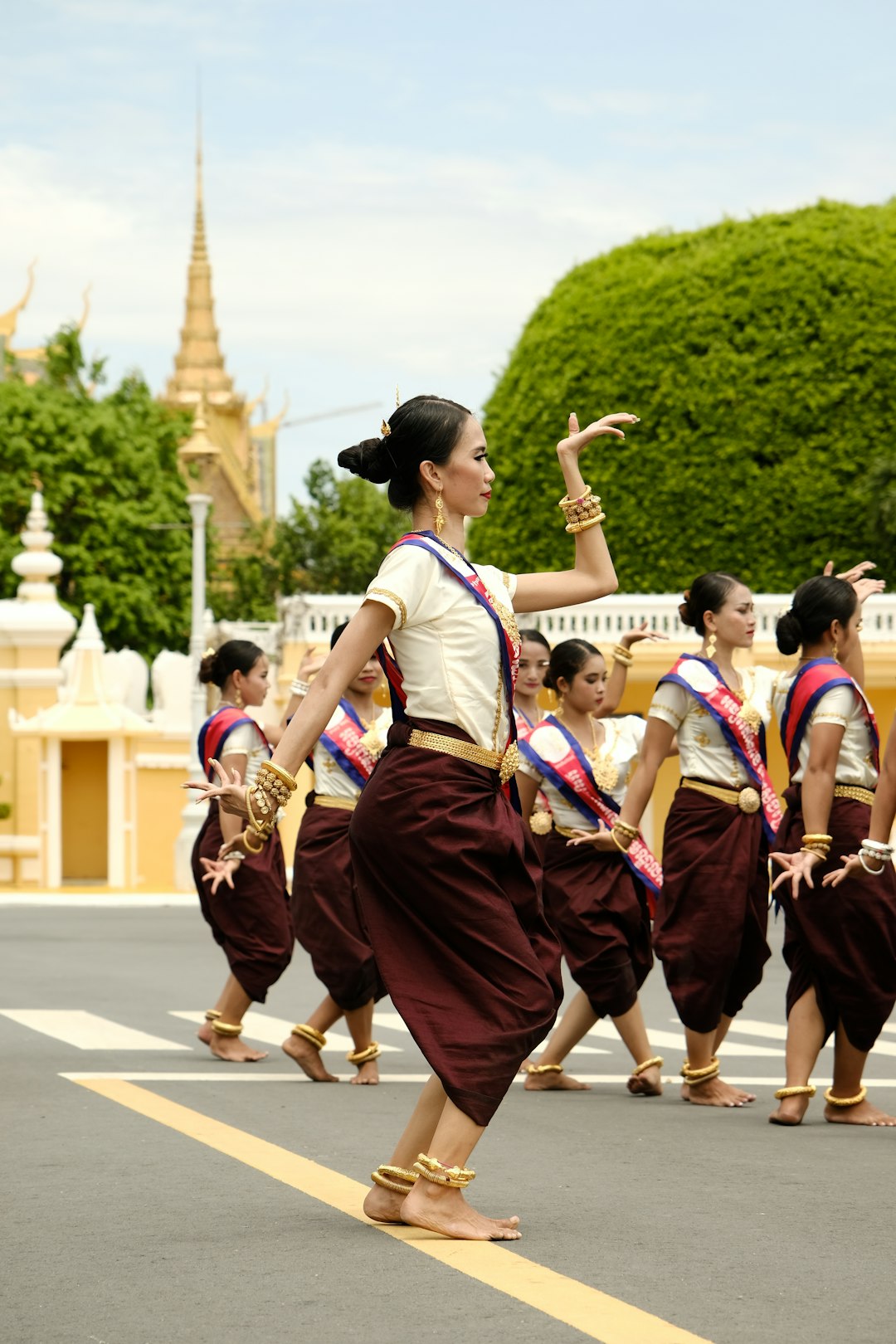Thailand’s Culture
1. Core Values and World-view
- Theravada Buddhism shapes everyday ethics—generosity (tān), morality (sīla), and mental cultivation (bhāvanā).
- Sanuk (the pursuit of enjoyable moments) and sabai (physical & mental ease) encourage a light-hearted outlook.
- Jai yen (“cool heart”) valorizes calm, while mai pen rai (“never mind”) defuses conflict.
- Social interaction revolves around hierarchy (phûu-yày / phûu-nòi), softened by the ideal of krèng jai—considerate restraint so others are not inconvenienced.
2. Religion and Spirituality
- About 93 % of Thais are Buddhist, yet popular practice fuses Buddhism with Brahmanism, Hindu epics, ancestor veneration, and local animism.
- Wat (temple) grounds double as religious centers, community halls, and cultural schools.
- Monkhood is a rite of passage for many boys; temporary ordination earns merit for the family.
- Spirit houses, amulets, tattoos (sak yant) and fortune-telling remain influential in daily decision-making.
3. Social Etiquette
- Greeting: The wai—palms pressed, head slightly bowed—varies in height according to status.
- Head & feet: The head is sacred, feet are low; avoid touching someone’s head or pointing your feet at people/Buddha images.
- Dress: Modest attire is expected in temples and government offices.
- The Monarchy: Portraits of the King appear everywhere; public criticism is both taboo and illegal (lèse-majesté laws).
- Dining: Shared dishes, spoon-and-fork pairing (not chopsticks except for noodles), and waiting for elders to begin are standard.
4. Family and Social Structure
• Families (khruâkhǒr) often span three generations under one roof; filial duty overrides individual goals.
• Eldest children shoulder responsibility, while younger siblings display obedience.
• Urbanization is expanding nuclear households, yet remittances from city workers to rural parents remain a moral obligation.
5. Festivals and Celebrations
| Festival | When | Highlights |
|---|---|---|
| Songkran (Thai New Year) | 13-15 Apr | Water-splashing, temple visits, cleansing statues |
| Loy Krathong | Nov full moon | Floating candle-lit baskets to honor river spirits |
| Visakha Bucha | May full moon | Candlelit circumambulation of temples |
| Phi Ta Khon | June–July (Dan Sai, Loei) | Ghost masks, bawdy parades seeking rainfall |
| Vegetarian Festival | Oct (Phuket & south) | Nine Emperor Gods rituals, fire-walking |
| Rocket Festival (Bun Bang Fai, Isan) | Pre-monsoon | Homemade rocket launches to petition rain |
6. Arts and Aesthetics
- Architecture: Gilded stupas of Bangkok’s Rattanakosin era, red-brick prangs of Ayutthaya, tiered wooden eaves of Lanna in Chiang Mai.
- Dance & Drama:
• Khon – masked dance-drama of the Ramakien epic.
• Lakhon & Likay – classical court vs. folk theatre. - Music: The piphat ensemble (xylophones, gongs, oboes) accompanies rituals; mor lam (Isan) features free-verse singing and khaen reed pipes.
- Literature: Traiphum Phra Ruang (Buddhist cosmology), Sunthorn Phu’s Phra Aphai Mani, modern social novels by Chart Korbjitti.
- Crafts: Jim Thompson-revived Thai silk, Benjarong porcelain, nielloware, umbrella painting of Bo Sang, silverwork of the Karen.
7. Performance & Sport
- Muay Thai (the “art of eight limbs”) blends combat, music (sarama), and ritual (wai khru dance).
- Traditional boat races, kite fights (chula vs. pakpao), and sepak takraw are seasonal favorites.
8. Cuisine
Flavour profile: a tightrope of spicy-salty-sweet-sour.
Regional signatures:
• Central: Tom yam kung, green curry.
• North: Khao soi, fermented sausage (sai oua).
• Isan: Som tam papaya salad, sticky rice, laab.
• South: Massaman curry, turmeric-laced seafood.
Eating culture prizes communal sharing, fresh herbs, and street-stall snacking from dawn till midnight.
9. Language
- Standard Thai has five tones and a unique abugida script derived from Old Khmer.
- Politeness particles — khrap (male) / khâ (female) — punctuate sentences.
- Regional dialects: Northern (Kham Mueang), Isan (Lao-related), Southern; plus 60+ minority tongues (Malay, Karenic, Hmong-Mien, Sino-Tibetan).
10. Contemporary Culture
- Entertainment exports: Thai BL dramas, horror films (Shutter, Pee Mak), and chart-topping T-pop idols.
- Bangkok’s creative districts (Talat Noi, Charoenkrung) mix street art, design hotels, and third-wave cafés.
- LGBTQ+ visibility is high by regional standards, though legal equality debates continue.
- Rapid digital adoption (one of the world’s highest social-media usage rates) coexists with reverence for tradition.
11. Regional & Ethnic Diversity
- Isan culture leans on Lao heritage, khaen music, sticky rice.
- Lanna north showcases Lana script, khantoke dinners, and Yi Peng lanterns.
- Malay-influenced southern provinces feature mosques, batik, and a distinctive spicy cuisine.
- Hill peoples (Karen, Hmong, Akha, Lisu, etc.) maintain woven textiles, animist rites, and rotational agriculture.
12. Preservation and Challenges
• Overtourism pressures sites like Maya Bay and Chiang Mai’s old town.
• Urban sprawl threatens wooden shophouses; NGOs lobby for conservation.
• Younger Thais juggle global consumer culture with ancestral expectations, prompting lively debates on identity, faith, and freedom of expression.
Thailand’s culture is therefore a dynamic tapestry—shimmering with gold-leaf temples, fragrant street food, ritual water fights, and the quiet hum of meditation bells—continually weaving new threads while guarding centuries-old motifs.
